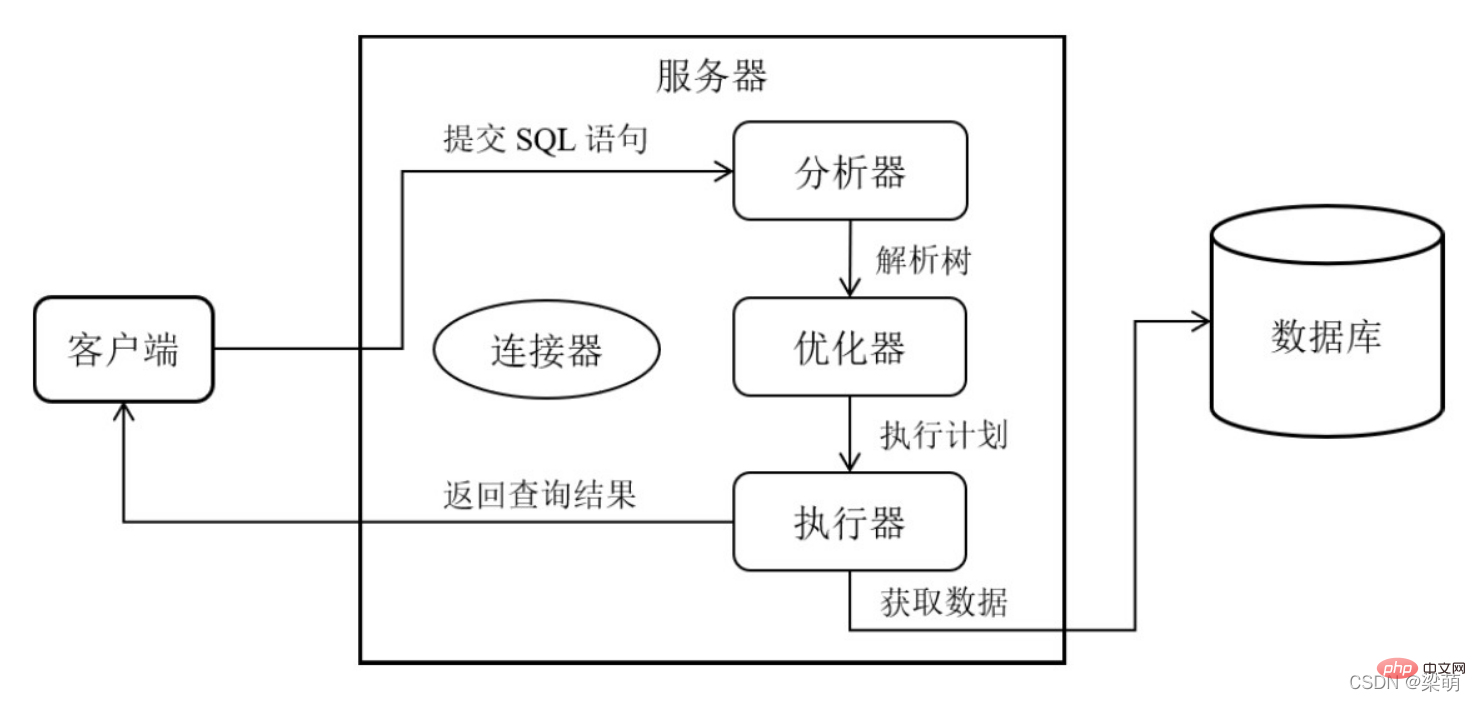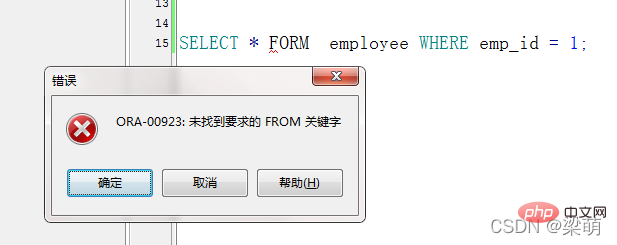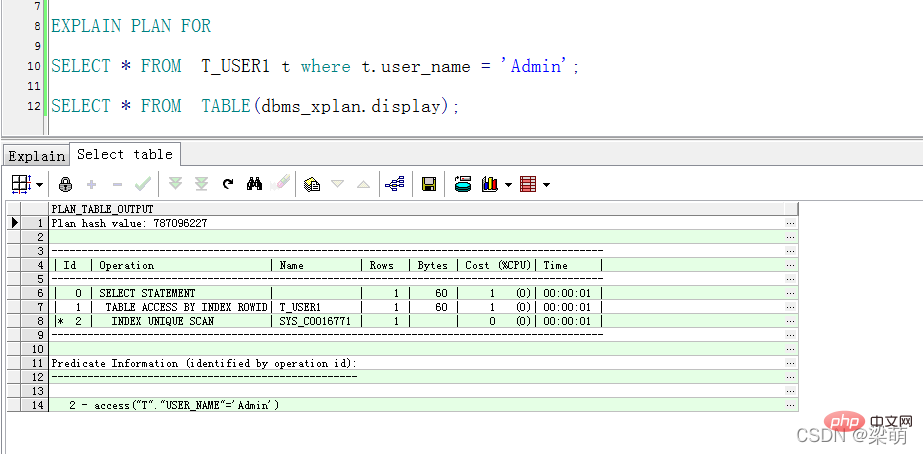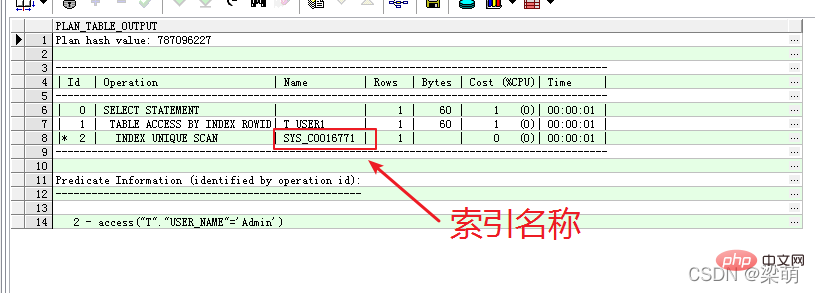Summarize Oracle query execution plan
This article brings you relevant knowledge about Oracle, which mainly introduces the relevant content about query execution plan. It is the specific steps and process of executing SQL statements in the database. Let’s take a look. Take a look, hope it helps everyone.

Recommended tutorial: "Oracle Video Tutorial"
Execution Plan (Execution Plan) is also called Query Plan (Query Plan), which is the specific steps and process for the database to execute SQL statements. The execution plan of a SQL query statement mainly includes:
How to access the table. The database accesses data in the table through indexes or full table scans.
How to join multiple tables. What connection algorithm is used by the database to connect tables, including the sequential access sequence of multiple tables.
How to implement operations such as grouping, aggregation and sorting.
Although different databases adopt different implementation methods for the execution process of SQL queries, a query statement generally needs to be processed by the analyzer, optimizer and executor and return the final result. At the same time, various caches may also be used to improve access performance.
Simply put, a query statement starts from the submission of the client until the server returns the final result. The entire process is roughly as shown in the figure.

First, the client submits the SQL statement. Before this, the client must connect to the database server. The connector in the figure is the component responsible for establishing and managing client connections.
Then, the analyzer (parser) parses the various components of the SQL statement, performs syntax analysis, and checks whether the syntax of the SQL statement conforms to the specification.
For example, the FROM keyword in the following statement is incorrectly written as FORM:

In this case, all database management systems will return a syntax mistake.
The optimizer then uses the statistical information collected by the database to determine the best way to execute the SQL statement. For example, whether to access a single table through an index or a full table scan, what order to use to connect multiple tables, how to sort data, etc.
The optimizer is a key component that determines query performance, and the statistical information of the database is the basis for the optimizer's judgment.
Finally, the executor calls the corresponding execution module to obtain the data according to the optimized execution plan, and returns the result to the client.
How to view the execution plan
Method 1: Statement view
In the Oracle database, we can also use the EXPLAIN PLAN FOR command to generate an execution plan , but two commands need to be executed:

EXPLAIN PLAN FOR SELECT * FROM T_USER1 t where t.user_name = 'Admin'; SELECT * FROM TABLE(dbms_xplan.display);
Use the EXPLAIN PLAN FOR command to generate an execution plan, store it in the system table PLAN_TABLE, and then display the generated execution plan through a query statement execution plan.
Where dbms_xplan.display is an Oracle system function. The returned results show that the statement finds data through 'SYS_C0016771' index range scan in Oracle.

Method 2: Use tools to view
In the commonly used Oracle database development tool PL/SQL, select a SQL script, Press the F5 key to automatically display the execution plan information of the script, which is the same as the result queried in method 1.

Execution process analysis
In the Oracle database, we can query the index and related field information through the system tables user_indexes and user_ind_columns.
SELECT * FROM user_indexes; SELECT * FROM user_ind_columns;
Recommended tutorial: "Oracle Video Tutorial"
The above is the detailed content of Summarize Oracle query execution plan. For more information, please follow other related articles on the PHP Chinese website!

Hot AI Tools

Undresser.AI Undress
AI-powered app for creating realistic nude photos

AI Clothes Remover
Online AI tool for removing clothes from photos.

Undress AI Tool
Undress images for free

Clothoff.io
AI clothes remover

Video Face Swap
Swap faces in any video effortlessly with our completely free AI face swap tool!

Hot Article

Hot Tools

Notepad++7.3.1
Easy-to-use and free code editor

SublimeText3 Chinese version
Chinese version, very easy to use

Zend Studio 13.0.1
Powerful PHP integrated development environment

Dreamweaver CS6
Visual web development tools

SublimeText3 Mac version
God-level code editing software (SublimeText3)

Hot Topics
 1673
1673
 14
14
 1428
1428
 52
52
 1333
1333
 25
25
 1277
1277
 29
29
 1257
1257
 24
24
 What to do if the oracle can't be opened
Apr 11, 2025 pm 10:06 PM
What to do if the oracle can't be opened
Apr 11, 2025 pm 10:06 PM
Solutions to Oracle cannot be opened include: 1. Start the database service; 2. Start the listener; 3. Check port conflicts; 4. Set environment variables correctly; 5. Make sure the firewall or antivirus software does not block the connection; 6. Check whether the server is closed; 7. Use RMAN to recover corrupt files; 8. Check whether the TNS service name is correct; 9. Check network connection; 10. Reinstall Oracle software.
 How to solve the problem of closing oracle cursor
Apr 11, 2025 pm 10:18 PM
How to solve the problem of closing oracle cursor
Apr 11, 2025 pm 10:18 PM
The method to solve the Oracle cursor closure problem includes: explicitly closing the cursor using the CLOSE statement. Declare the cursor in the FOR UPDATE clause so that it automatically closes after the scope is ended. Declare the cursor in the USING clause so that it automatically closes when the associated PL/SQL variable is closed. Use exception handling to ensure that the cursor is closed in any exception situation. Use the connection pool to automatically close the cursor. Disable automatic submission and delay cursor closing.
 How to create cursors in oracle loop
Apr 12, 2025 am 06:18 AM
How to create cursors in oracle loop
Apr 12, 2025 am 06:18 AM
In Oracle, the FOR LOOP loop can create cursors dynamically. The steps are: 1. Define the cursor type; 2. Create the loop; 3. Create the cursor dynamically; 4. Execute the cursor; 5. Close the cursor. Example: A cursor can be created cycle-by-circuit to display the names and salaries of the top 10 employees.
 How to export oracle view
Apr 12, 2025 am 06:15 AM
How to export oracle view
Apr 12, 2025 am 06:15 AM
Oracle views can be exported through the EXP utility: Log in to the Oracle database. Start the EXP utility, specifying the view name and export directory. Enter export parameters, including target mode, file format, and tablespace. Start exporting. Verify the export using the impdp utility.
 What to do if the oracle log is full
Apr 12, 2025 am 06:09 AM
What to do if the oracle log is full
Apr 12, 2025 am 06:09 AM
When Oracle log files are full, the following solutions can be adopted: 1) Clean old log files; 2) Increase the log file size; 3) Increase the log file group; 4) Set up automatic log management; 5) Reinitialize the database. Before implementing any solution, it is recommended to back up the database to prevent data loss.
 Oracle's Role in the Business World
Apr 23, 2025 am 12:01 AM
Oracle's Role in the Business World
Apr 23, 2025 am 12:01 AM
Oracle is not only a database company, but also a leader in cloud computing and ERP systems. 1. Oracle provides comprehensive solutions from database to cloud services and ERP systems. 2. OracleCloud challenges AWS and Azure, providing IaaS, PaaS and SaaS services. 3. Oracle's ERP systems such as E-BusinessSuite and FusionApplications help enterprises optimize operations.
 What steps are required to configure CentOS in HDFS
Apr 14, 2025 pm 06:42 PM
What steps are required to configure CentOS in HDFS
Apr 14, 2025 pm 06:42 PM
Building a Hadoop Distributed File System (HDFS) on a CentOS system requires multiple steps. This article provides a brief configuration guide. 1. Prepare to install JDK in the early stage: Install JavaDevelopmentKit (JDK) on all nodes, and the version must be compatible with Hadoop. The installation package can be downloaded from the Oracle official website. Environment variable configuration: Edit /etc/profile file, set Java and Hadoop environment variables, so that the system can find the installation path of JDK and Hadoop. 2. Security configuration: SSH password-free login to generate SSH key: Use the ssh-keygen command on each node
 How to stop oracle database
Apr 12, 2025 am 06:12 AM
How to stop oracle database
Apr 12, 2025 am 06:12 AM
To stop an Oracle database, perform the following steps: 1. Connect to the database; 2. Shutdown immediately; 3. Shutdown abort completely.




